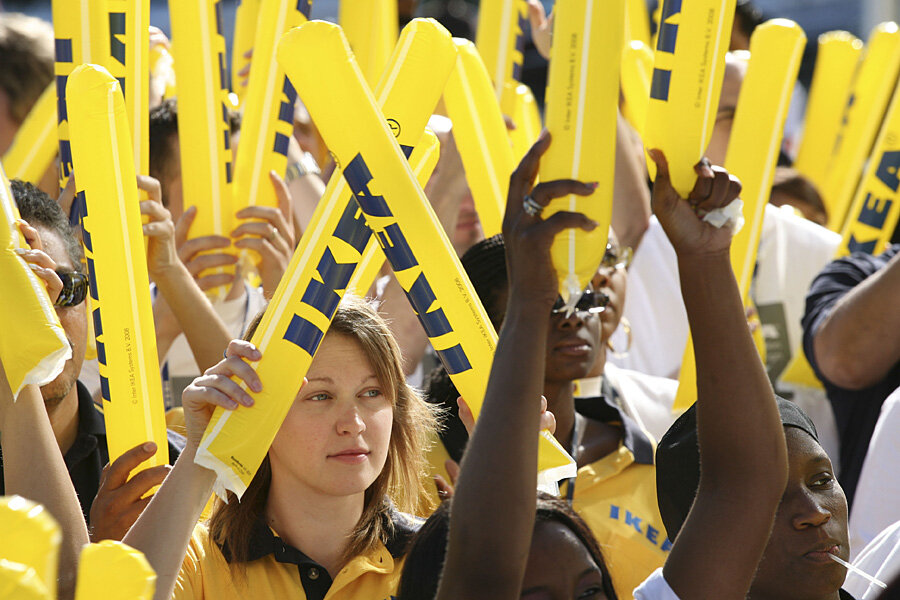IKEA gets flexible with minimum worker pay
Loading...
Sweden has no federal minimum wage. Instead, its wages are negotiated with unions from year to year. So it should be no surprise, then, that IKEA would be similarly flexible in changing its minimum pay for its US employees.
The Swedish furniture giant announced Thursday that it will be raising its minimum pay for workers in its 38 US store locations. The pay raises will affect about half the company’s workers and raise the average minimum pay rate to $10.75 per hour – an average increase of about 17 percent, according to the company's press announcement.
But the raise isn’t a fixed amount nationwide. Instead, minimum pay for each store will be set based on the cost of living in that location’s area. That means the $8.69 minimum for workers in the company’s two least expensive locations, Pittsburgh and West Chester, Ohio, is nearly $6 less than for workers in Woodbridge, Va., near Washington (who will get $13.22 per hour minimum).
The new wages will go into effect in January 2015.
“The transition to the new minimum hourly wage structure is not only the right thing to do, it makes good business sense,” Rob Olson, IKEA US acting president and chief financial officer, said in the announcement. “We are basing our wages on our co-workers and their needs, rather than what the local employment market dictates.”
Mr. Olson called the new wage structure a “significant investment,” but said that IKEA would not be raising its prices to pay for it.
The wage increases for each location are based on the Massachusetts Institute of Technology's Cost of Living calculator, which takes the area’s cost of housing, food, medical care, transportation, and taxes into consideration. (IKEA’s wages are based on the totals for a single person without any children.)
IKEA’s announcement comes on a wave of support for the idea of increased worker wages, both public and private. In February, clothing retailer Gap Inc. announced that it would raise its minimum pay to $9 per hour, then again to $10 per hour sometime next year. Massachusetts is looking to increase its state minimum wage to $11 an hour. Earlier this month, Seattle’s city council approved the adoption of a $15 per hour minimum wage in that city, though a group of local businesses has sued to block the measure. Minnesota, Maryland, Connecticut, and California have all passed laws to raise their minimum wages in the coming years.
By getting out in front of such measures, companies like IKEA and Gap earn a bit of good PR for a move they may have had to make eventually anyway. They also lure better workers: Gap, based in San Francisco, says it has seen a double-digit increase in job applications at Gap and Old Navy stores since last year, according to the Los Angeles Times.
IKEA, too, is positioning itself as a desirable long-term option for potential employees with its benefits as well as its wages. The company’s 401(k) plan offers a 100 percent match for the first 4 percent of contributed employee pay and 50 percent for another 2 percent.
But even companies not exactly known for high-quality worker treatment are trying to get in on IKEA’s wage-hike goodwill. “Great news from @IKEAUSANews today,” the Twitter account for Walmart’s newsroom tweeted. “[Did you know] Walmart's average hourly wage for full and part time associates is $11.81?”
For readers keeping score: "average wage" is quite different from "hourly minimum wage." IKEA is still ahead.






